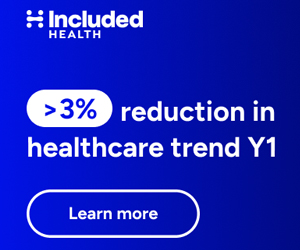 Over the past decade, there has been yet another debate about whether pay-for-performance, the notion that the amount you get paid is tied to some measure of how you perform, “works” or not. It’s a silly debate, with proponents pointing to the logic that “you get what you pay for” and critics arguing that the evidence is not very encouraging. Both sides are right.
Over the past decade, there has been yet another debate about whether pay-for-performance, the notion that the amount you get paid is tied to some measure of how you perform, “works” or not. It’s a silly debate, with proponents pointing to the logic that “you get what you pay for” and critics arguing that the evidence is not very encouraging. Both sides are right.
In really simple terms, pay-for-performance, or P4P, can be thought about in two buckets: the “pay” part (how much money is at stake) and the “performance” part (what are we paying for?). So, in this light, the proponents of P4P are right: you get what you pay for. The U.S. healthcare system has had a grand experiment with P4P: we currently pay based on volume of care and guess what? We get a lot of volume. Or, thinking about those two buckets, the current fee-for-service structure puts essentially 100% of the payments at risk (pay) and the performance part is simple: how much stuff can you do? When you put 100% of payments at risk and the performance measure is “stuff”, we end up with a healthcare system that does a tremendous amount of stuff to patients, whether they need it or not.
Against these incentives, new P4P programs have come in to alter the landscape. They suggest putting as much as 1% (though functionally much less than that) on a series of process measures. So, in this new world, 99%+ of the incentives are to do “stuff” to patients and a little less than 1% of the incentives are focused on adherence to “evidence-based care” (though the measures are often not very evidence-based, but let’s not get caught up in trivial details). There are other efforts that are even weaker. None of them seem to be working and the critics of P4P have seized on their failure, calling the entire approach of tying incentives to performance misguided.
The debate has been heightened by the new national “value-based purchasing” program that Congress authorized as part of the Affordable Care Act. Based on the best of intentions, Congress asked Medicare to run a program where 1% of a hospital’s payments (rising to 2% over several years) is tied to a series of process measures, patient experience measures, and eventually, mortality rates and efficiency measures. We tried a version of this for six years (the Premier Hospital Quality Incentives Demonstration) and it didn’t work. We will try again, with modest tweaks and changes. I really hope it improves patient outcomes, though one can understand why the skeptics aren’t convinced.Continue reading…

 For the third year in a row, national health spending in 2011 grew less than 4 percent, according to the CMS Office of the Actuary. However,
For the third year in a row, national health spending in 2011 grew less than 4 percent, according to the CMS Office of the Actuary. However, 
 The Affordable Care Act contains a number of provisions intended to incent “personal responsibility,” or the notion that health care isn’t just a right — it’s an obligation. None of these measures is more prominent than the law’s individual mandate, designed to ensure that every American obtains health coverage or pays a fine for choosing to go uninsured.
The Affordable Care Act contains a number of provisions intended to incent “personal responsibility,” or the notion that health care isn’t just a right — it’s an obligation. None of these measures is more prominent than the law’s individual mandate, designed to ensure that every American obtains health coverage or pays a fine for choosing to go uninsured.
 A report published by the Institute of Medicine (IOM) on high-value health care attracted attention when it was issued last June. Authored by a group of eleven leading hospital executives,
A report published by the Institute of Medicine (IOM) on high-value health care attracted attention when it was issued last June. Authored by a group of eleven leading hospital executives, 

 I have been absent from the blogosphere for about two months. The fact is, there just isn’t all that much new to write about. Healthcare spending growth continues to moderate, but not by enough to stave off forecasts of doom for Medicare and Medicaid. Nor can employers begin to shift money from health benefits back into wages. But wheels are turning. Health networks are expanding as providers prepare to offer ACOs and/or increase their bargaining clout. A handful of states are poised to start up exchanges with the feds ready to take the reins in the laggard states. Aon/Hewitt is about ready to launch a private sector exchange. We will start to learn whether exchanges save or destroy private health insurance.
I have been absent from the blogosphere for about two months. The fact is, there just isn’t all that much new to write about. Healthcare spending growth continues to moderate, but not by enough to stave off forecasts of doom for Medicare and Medicaid. Nor can employers begin to shift money from health benefits back into wages. But wheels are turning. Health networks are expanding as providers prepare to offer ACOs and/or increase their bargaining clout. A handful of states are poised to start up exchanges with the feds ready to take the reins in the laggard states. Aon/Hewitt is about ready to launch a private sector exchange. We will start to learn whether exchanges save or destroy private health insurance.









